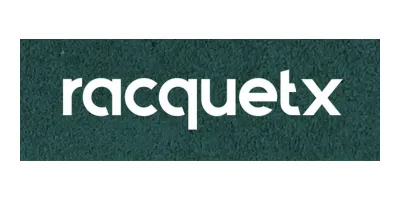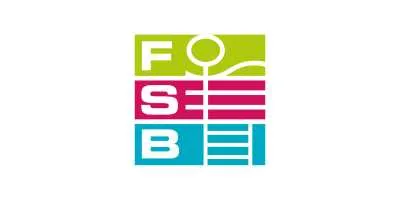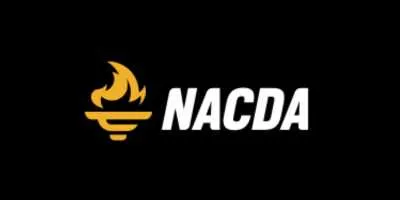Home » Tennis Court » Tennis Court Construction and Resurfacing Guide for San Francisco

San Francisco, with its vibrant communities, is a haven for outdoor enthusiasts. Tennis courts are a popular amenity, offering a space for exercise, friendly competition, and social connection. But whether you’re considering building a brand new court or refreshing an existing one, navigating the process can be tough due to engineering and legal complexities.
This comprehensive guide is here to help you ace your tennis court project! We’ll explain some unique considerations for constructing a court in San Francisco’s specific climate and environment. You’ll learn about essential local regulations and permitting procedures to ensure your court meets all the requirements.
Remember, a successful tennis court project requires careful planning and budgeting. To receive a customized project estimate, be sure to use our tennis court cost calculator.
Tennis Court Construction and Resurfacing Costs in San Francisco
New Installation Cost
The average cost to construct a tennis court for a commercial complex or a high school in San Francisco ranges from $20,000 to $120,000. This variation depends on the chosen surface material, level of competition, user preferences, and additional features included.
Resurfacing Cost
Resurfacing an existing tennis court is generally less expensive than building a new one. However, the cost depends on the extent of damage and the chosen surface material. Expect to pay roughly 50-70% of the construction cost for resurfacing a tennis court.
Factors Affecting Costs
Surface Type
Asphalt courts are the most cost-effective, offering durable and medium-fast play. Artificial turf, slightly pricier, provides better joint support for various sports. Concrete courts, while more expensive, deliver durability and a fast playing surface. Rubber courts, costly and with shorter lifespans, excel in cushioning and injury prevention. Acrylic courts, moderately priced, offer customizable features and a balance of comfort and durability.
Land Preparation
Before construction begins, the land needs to be prepped. This includes activities like clearing the area, leveling the ground, and ensuring proper drainage.
- Leveling or regrading
- Fill dirt delivery
- Gravel delivery
- Excavation
- Dirt removal
- French drain installation
Additional Features
Lighting, fencing, seating, and other amenities add to the overall cost. Consider your needs and budget when deciding on these features.

San Francisco Climate and Its Impact on Tennis Court Construction and Resurfacing
San Francisco’s unique climate, with its cool summers, foggy mornings, and distinct wet and dry seasons, presents both opportunities and challenges for tennis court construction and resurfacing. Here are some key considerations to factor in:
Surface Selection
San Francisco’s average annual rainfall of 22.9 inches necessitates a highly draining court surface. You should consider installing a hard court, which excels at shedding water.
Combating Fog
Summer fog can be a charming San Francisco quirk, but it can also linger on courts for extended periods, impacting playability. Opt for a court surface that dries quickly, like acrylic hard courts. These surfaces allow for faster evaporation.
Microclimate Variations
San Francisco experiences temperature variations depending on location. If your court is near the coast, expect cooler temperatures and potentially higher humidity. Opt for a surface that performs well in such conditions, such as acrylic hard courts, which maintain consistent playing characteristics across a wider temperature range.
Sun and Shade
San Francisco receives ample sunshine throughout the year, with an average of 10-11 sunshine hours daily in summer. Consider incorporating shade structures, particularly on courts located away from the cooling influence of the coast. This will protect the court surface from excessive sun exposure.
We also talk about the climatic impact in our separate article about tennis court construction in California.
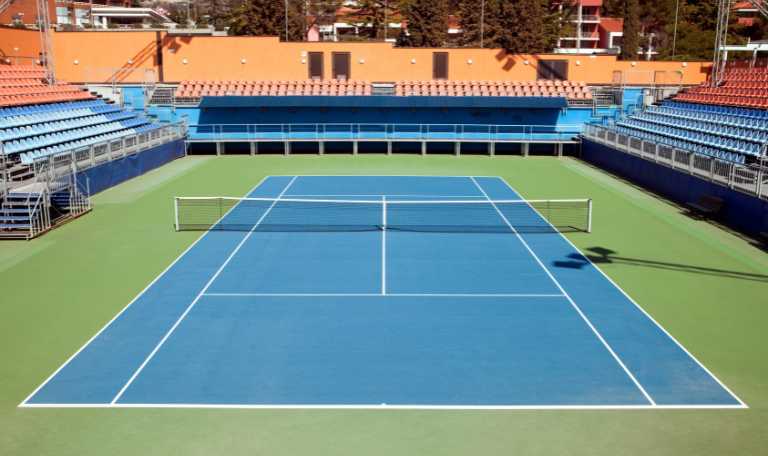
Seismic Activity
San Francisco sits on an active fault line, so earthquake preparedness is paramount for any construction project. San Francisco experiences numerous small earthquakes annually, averaging around 50-100 detectable tremors. To tackle this the contractors need to take some steps:
- Seismic Design Standards: Ensure the court design adheres to the latest California Building Code (CBC) seismic provisions for San Francisco’s designated high-seismic zone. This includes stricter regulations for foundation design, lateral force resistance, and the use of earthquake-resistant materials.
- Flexible Court Surface: Consider using a flexible court surface, like acrylic or rubberized asphalt, which can better absorb seismic vibrations and minimize cracking compared to rigid concrete surfaces.
Water Conservation
Here’s how project owners and court builders can ensure water-wise construction for tennis courts:
- Recycled Water Investigation: Investigate the possibility of using recycled water for approved construction tasks like dust control or concrete curing, if regulations and local water agencies allow.
- Dust Control Alternatives: Minimize water use for dust suppression. Explore using crushed gravel on haul roads, commercially available dust palliatives, or even street sweeping instead of frequent water spraying.
- Water-Efficient Equipment: Opt for construction equipment with water-saving features. This includes machinery with low-flow water nozzles and leak-free connections for activities like concrete mixing or dust suppression.
Comparing Tennis Court Companies
When comparing tennis court companies, assess their expertise, track record, and client feedback. Evaluate site-specific conditions like soil composition and drainage to determine the most suitable construction methods and materials. Opt for companies that utilize advanced technologies, such as permeable surfaces, to enhance drainage and minimize structural stress. Additionally, ensure that each step of the construction process is meticulously managed by experienced professionals to maintain high-quality standards and achieve lasting results.
Tennis Court Construction and Resurfacing Companies in San Francisco, California
Ecore Athletic
Ecore Athletic is a leader in designing and producing tennis court surfaces that enhance player performance through durable, ergonomic, and acoustically optimized materials. Their surfaces, suitable for both indoor and outdoor courts, prioritize safety, comfort, and high performance. Ecore Athletic is also deeply committed to sustainability, focusing on reducing rubber waste and developing environmentally responsible products. Serving San Francisco, California, they provide top-quality solutions tailored to the unique needs of the region’s diverse tennis environments.
Tennis Court System:
- TrueCourt: Specifically designed for outdoor tennis courts, TrueCourt offers exceptional durability and optimal shock absorption to handle San Francisco’s outdoor conditions.
- TeamPlay M: Tailored for indoor courts, TeamPlay M ensures consistent ball response and provides cushioning to enhance player safety.
Services Offered:
- Comprehensive design and installation services for tennis courts in San Francisco.
- Tailored solutions to meet the specific needs of each project.
Certifications & Memberships:
- Member of the American Sports Builders Association (ASBA)
- Holds certifications including FloorScore®, EPDs, HPDs, GREENGUARD Gold, and ISO 9001.

VersaCourt
VersaCourt is a leading provider of high-quality tennis courts, known for its innovative modular interlocking tiles that offer exceptional durability and performance. Their advanced tile systems create safe, customizable surfaces ideal for both residential and professional sports venues. In San Francisco, California, VersaCourt offers comprehensive design and installation services, collaborating closely with clients to develop courts that meet specific aesthetic and functional needs. Widely used in local schools, parks, and resorts, VersaCourt’s products are recognized for enhancing both safety and visual appeal. Their commitment to quality is underscored by their ISO 9001:2008 certification.
Tennis Court Systems:
- Consistent Ball Bounce: Engineered to provide reliable and consistent play.
- Enhanced Safety: Designed with superior grip to reduce the risk of injury.
- Easy Maintenance: The modular design simplifies cleaning and allows for straightforward repairs.
- Customizable Design: Adaptable to various environments, whether residential or professional.
- Durability: Constructed to withstand diverse conditions, ensuring long-term performance.
- Versatile Installation: Available with options for both professional installation and DIY support.
Services Offered:
- Customized court design and installation services in San Francisco.
- DIY installation support.
- Integration with additional features from The Recreational Group, including synthetic turf and playground surfacing.
Certifications & Memberships:
- ISO 9001:2008 certified, highlighting their commitment to quality management.
Outdoor Tennis Court Installation by VersaCourt
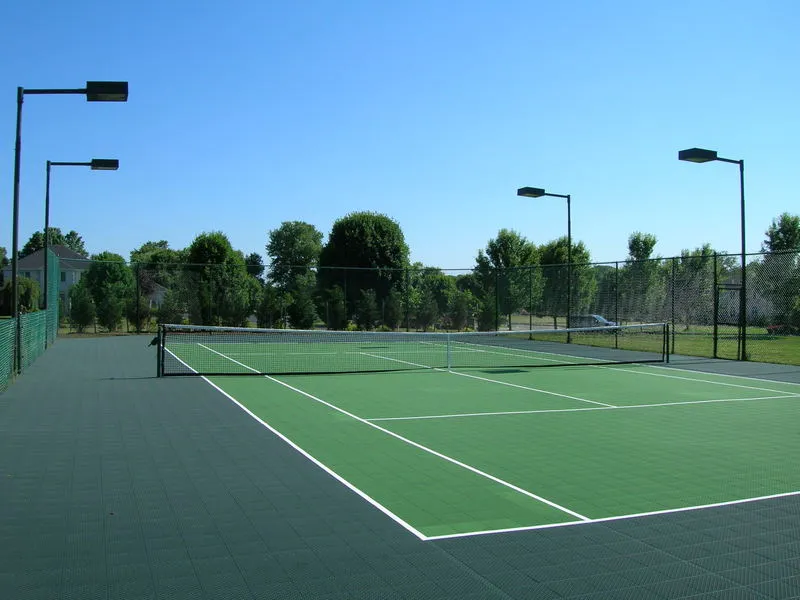
Indoor Tennis Court Installation by VersaCourt
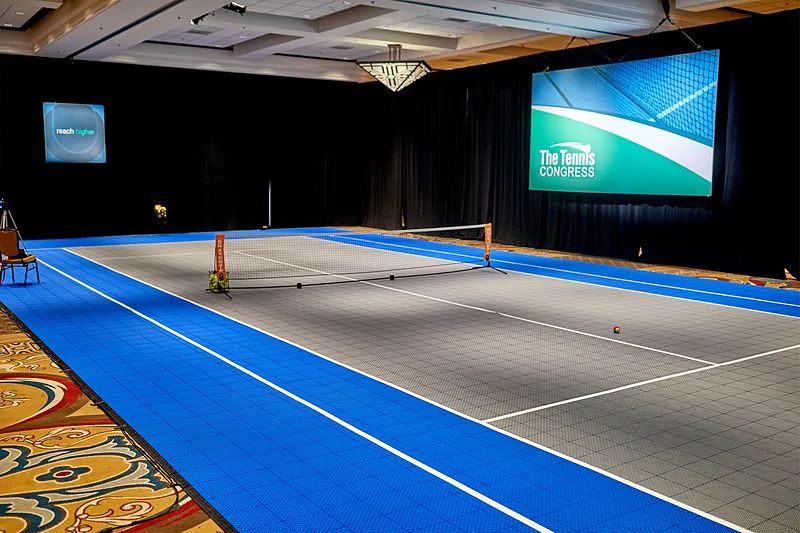
California Sports Surfaces
Since its founding in 1953, California Sports Surfaces (CSS) has been a leader in the innovation of sports surfaces, creating products that significantly enhance athletic performance. With a strong presence in San Francisco, California, CSS has established itself as a trusted provider of high-quality sports surfaces. As a prominent member of the American Sports Builders Association (ASBA) and holding certifications in all four ITF Court Pace categories, CSS has provided surfaces for some of the most prestigious sporting events globally, including the Olympics and the US Open. Their dedication to excellence and cutting-edge technology has earned them numerous accolades, including five ASBA 2023 Outstanding Facilities of the Year awards.
Tennis Court Systems:
- DecoTurf®: The official surface of the US Open from 1978 to 2019, offering a range of ITF pace ratings suitable for all levels of play.
- Plexipave: Selected for major tournaments such as the Australian Open (2008-2019) and the BNP Paribas Open, Plexipave is celebrated for its top-tier performance and durability.
- Rebound Ace®: Known globally for its cushioned, multi-layered design, Rebound Ace® is ideal for a variety of sports, including netball and basketball.
- Premier Sports Coatings®: These high-performance coatings are perfect for residential courts, clubs, universities, and recreational facilities, providing long-lasting durability.
Certifications & Memberships:
- Active member of the American Sports Builders Association (ASBA)
- Certified across all ITF Court Pace categories 1-4
Featured project by California Sports Surfaces at the Delray Beach Open Tennis Center.
Local Building Codes and Permits for Tennis Court Construction and Resurfacing in San Francisco
When building a tennis court in San Francisco, it’s essential to adhere to local building codes enforced by the San Francisco Department of Building Inspection. While the builder you hire is responsible for complying with these codes, obtaining the necessary permits, and ensuring that the construction meets all regulations, it’s still important for you as the project owner to have a basic understanding of how building codes and permits work.
This knowledge empowers you to oversee the project effectively, ensures transparency throughout the construction process, and helps prevent any potential delays or complications related to non-compliance with legal standards. Understanding these elements also facilitates better communication with your builder and helps ensure that your project adheres strictly to safety and quality standards.
Relevant Codes and Resources
San Francisco uses two sets of building codes:
- San Francisco Building Code (SFBC): This code includes regulations specific to San Francisco and applies alongside the statewide standards.
- California Building Standards Code (CBC): This code sets the baseline standards for construction throughout California.
These codes cover various aspects of construction, including:
- Building requirements
- Plumbing
- Electrical systems
- Mechanical systems
- Energy efficiency
- Green building practices
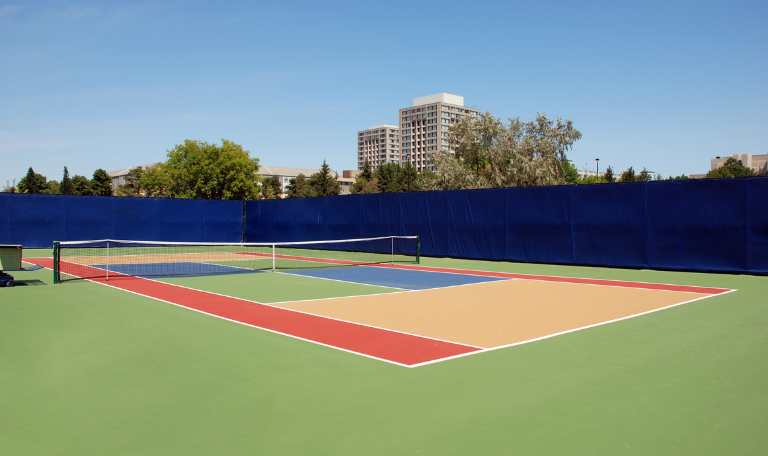
Finding the Codes
The San Francisco Department of Building Inspection website provides the official published versions of the SF Building Code, Electrical Code, Mechanical Code, Plumbing Code, Green Building Code, and more.
Permits Required for Building or Resurfacing Tennis Courts in San Francisco
Building or resurfacing a tennis court in San Francisco requires obtaining the proper permits from the San Francisco Department of Building Inspection (SFRBDBI). Here’s a breakdown of some common permits:
- Construction Permit: This permit is mandatory for building a new tennis court.
- Resurfacing Permit: This permit is required when renovating an existing court’s surface.
- Site Permit: If your tennis court is part of a larger development project, you might need a separate site permit.
- Electrical Permit: This permit is necessary for any electrical work related to court lighting or other electrical features.
- Plumbing and Mechanical Permits: These permits are required if the court involves plumbing or mechanical systems, such as irrigation or drainage systems.
- Reroofing Permit: If your tennis court has a roof structure, you’ll need a reroofing permit for any roof replacement work.
Choosing the Right Tennis Court Materials in San Francisco
Selecting the right surface material for your tennis court in San Francisco depends on several factors, but two main options stand out: hard courts and artificial grass.
Hard Courts (Acrylic):
These courts consist of a strong base layer of concrete or asphalt topped with a finishing surface, typically acrylic or polyurethane. Here’s why hard courts are a good fit for San Francisco:
- Durability: Concrete and asphalt are tough, long-lasting materials requiring minimal maintenance.
- Rain Resilience: San Francisco experiences occasional rain showers. Well-designed hard courts allow for efficient rainwater drainage, preventing puddles and ensuring year-round playability.
- Morning Fog Tolerance: The morning fog in San Francisco doesn’t significantly impact hard courts, allowing for early morning matches.
Artificial Grass (Synthetic Turf):
- Low Maintenance: Artificial grass requires significantly less upkeep compared to natural grass, eliminating the need for watering, mowing, and fertilizing.
- All-Weather Performance: San Francisco experiences a variety of weather conditions, including rain and fog. Synthetic turf performs well in all these conditions, allowing for year-round play.
- Consistent Play: Artificial grass courts provide a stable surface with a predictable ball bounce, ensuring a consistent playing experience.
- Cooling Effect: During hot weather, synthetic turf courts remain cooler than hard courts, offering a more comfortable playing surface.
- Ideal for Residential Courts: Due to their low maintenance needs, artificial grass courts are a popular choice for homeowners who want a tennis court in their backyard.
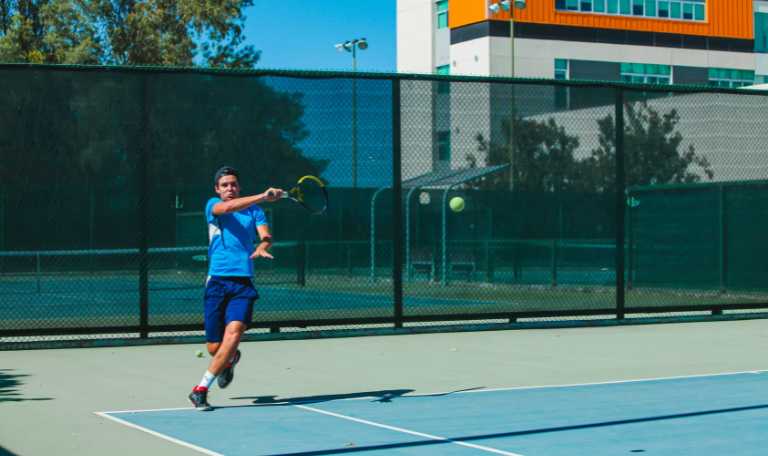
Tips for Tennis Court Maintenance and Upkeep
- Cleaning: Regularly sweep away leaves, debris, and dirt to prevent them from accumulating and causing damage to the surface. For deeper cleaning, consider an annual power washing (avoid high pressure for asphalt courts) or using a mild detergent solution.
- Crack Repair: Address any cracks promptly to prevent further damage and potential safety hazards.
- Drainage: Ensure proper drainage to avoid water pooling on the court’s surface, which can lead to mold growth and surface deterioration.
- Winterization: If you live in a climate with harsh winters, take steps to protect your court from freeze-thaw damage. This may involve covering the court or using a breathable net.
Bottom Line
By carefully considering factors like surface material, construction costs, and ongoing maintenance needs, you can make informed decisions about building or resurfacing your tennis court in San Francisco. It is very important to select a licensed tennis court builder with local experience, as they will have a nuanced understanding of the specific regulations and environmental conditions of the area. A well-built and well-maintained court, constructed by a knowledgeable professional, will provide years of enjoyment for you and your fellow players. Their expertise ensures that your investment is not only compliant with all local building codes but also optimally designed for durability and performance.
Ready to get a detailed estimate and explore your options? Try our tennis court cost calculator.



